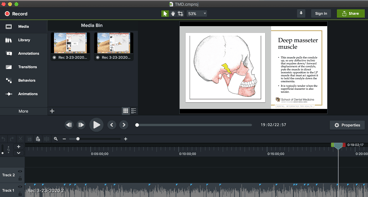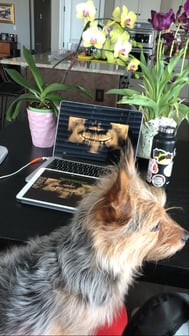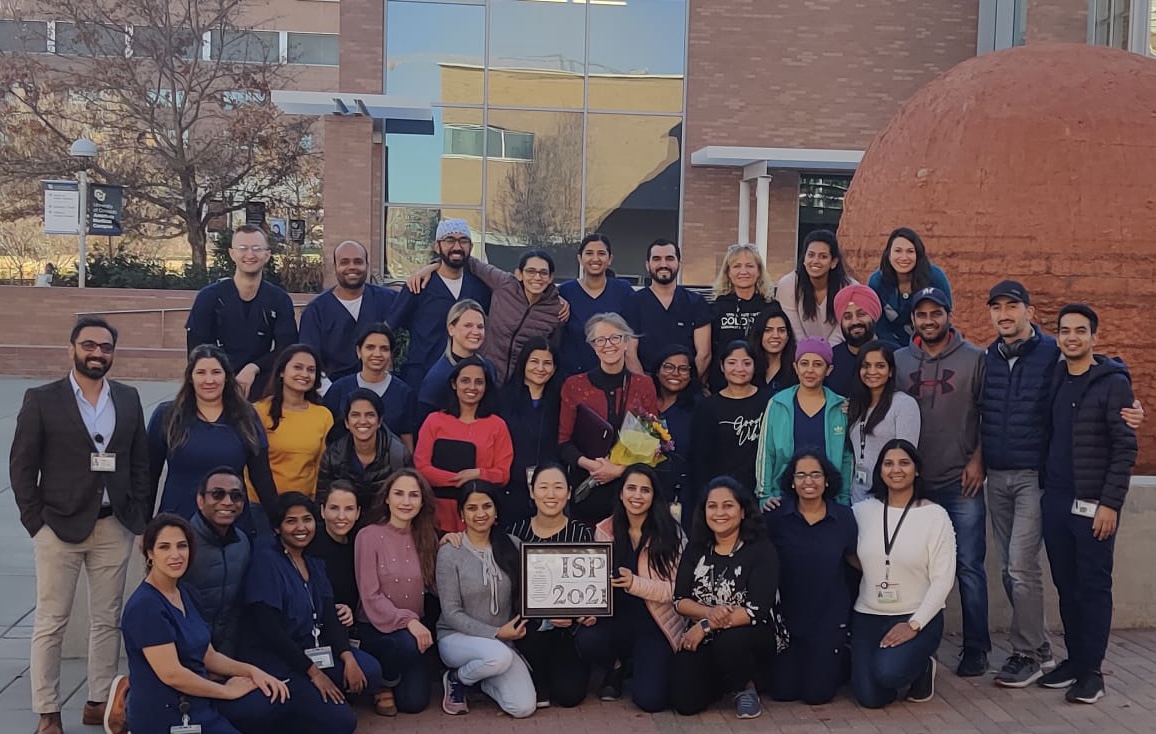With a rush to stay safe during the COVID-19 global pandemic, students and faculty at the University of Colorado School of Dental Medicine had just a week’s notice that classes would go from in-person to remote delivery.
For faculty, it was a scramble to adjust lesson plans and familiarize themselves with video conferencing technology. Liz Ramos, DDS, M.S.D., senior director of academic achievement and curriculum, spent hours with the CU Dental IT team and faculty coordinating classes using the computer app, Zoom.

An image from Dr. Baskaran's class |
“Zoom has been a useful and efficient tool, giving the faculty the option to teach in real-time or discuss prerecorded portions of their lecture,” Ramos says. “Some of our colleagues have used Zoom to schedule individual and small group meetings with their students as well.”
Since K-12 schools in Colorado also have been closed, a good number of students, faculty and staff have been working remotely with the added responsibility of caring for and, in some cases, teaching young children. The videoconferencing program allows flexibility for those without daycare to record lectures and watch later.
“The faculty has been very understanding of students’ circumstances,” Ramos says. Even though class attendance is high, she looks forward to the day when in-person instruction returns.
“From a pedagogy standpoint, learning isn’t just having a student watch a lecture and take a quiz, but rather learning happens by engaging with their peers and their faculty,” Ramos says.
For Krithika Baskaran, DDS, B.D.S, even though she misses the in-class instruction, there is a considerable upside to recording her lectures and teaching remotely. “I think it has been a great self-evaluation tool to my teaching style as I hear my own lecture while I present from a different perspective,” she says.
Baskaran took 2-3 days to adapt her lectures to the new online format using Camtasia, a screen recording software. She believes her first class went well because of the feedback from students and thinks it helped that she emailed beforehand so her students would know what to expect.
“We take scheduled breaks and review what we have covered so far,” Baskaran says. “Using this format frees me up to watch the chat for students’ questions and allows me to answer efficiently during breaks.”
Baskaran says she could not have done this without the tremendous amount of support from CU Dental’s IT team, which provided resources for both students and faculty.
 And the reviews from students have, for the most part, been positive. From her home in the metro Denver area, Clara Nghiem (DDS ’23) has no trouble keeping up with her classes.
And the reviews from students have, for the most part, been positive. From her home in the metro Denver area, Clara Nghiem (DDS ’23) has no trouble keeping up with her classes.
“Our faculty has been wonderful to figure everything out and being so responsive to us,” Nghiem says. “Some have hosted online meetings that are solely question-and-answer sessions, so I don’t feel like we’re losing that opportunity to interact with them.”
Her only interaction during the day is with Bentley, her 10-year-old mixed terrier.
“Having him snuggled up next to me in ‘class’ and studying has been the saving grace,” Nghiem says. “It’s just the two of us for 90 percent of the day, so it’s nice to have him here to talk to.”
As a first-year student, Nghiem believes she has plenty of time to make up lost labs. “A delay in our education is a tiny price to pay to do our best to keep the community safe,” Nghiem says.



